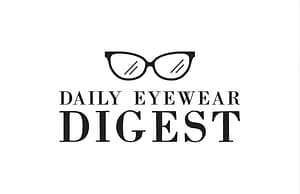Making the Switch to Daily Disposable Contact Lenses
Key Takeaways
– Overview and benefits of daily disposable contact lenses.
– Comparison with other types of contact lenses.
– Health benefits associated with daily disposables.
– Environmental considerations and sustainability.
– How to choose the right daily disposable lenses.
– Expert tips for a smooth transition.
– Cost considerations and long-term value.
The Rise of Daily Disposable Contact Lenses
Daily disposable contact lenses have surged in popularity over the past few years. Often referred to as “dailies,” these lenses are designed for single-use, meaning they are worn once and then discarded. This convenience, coupled with numerous health benefits, has made them a top choice among contact lens wearers.
Superior Hygiene and Convenience
One of the primary draws to daily disposable contact lenses is superior hygiene. Each day, you start with a fresh pair of lenses straight out of a sterile package, significantly reducing the risk of eye infections compared to lenses that are reused. Since there’s no need for cleaning solutions or storage cases, it simplifies the daily routine, putting fewer demands on your time and ensuring that the lenses remain uncontaminated.
Health Benefits: Minimal Deposits, Reduced Dryness
Daily lenses minimize the build-up of deposits like proteins and lipids from your tears, which can become uncomfortable and affect vision clarity. Furthermore, since daily disposables are thinner than extended-wear lenses, they tend to be more breathable, which helps your eyes stay moist and reduces the risk and symptoms of dryness. This is particularly beneficial for those who have sensitive eyes or experience discomfort with other types of lenses.
A Comparison with Extended-Wear and Monthly Lenses
Comparing daily disposables with other types of lenses such as extended-wear or monthly lenses, it’s clear that each has its own set of advantages and potential drawbacks. Monthly lenses can be more cost-effective in the short term and are often suitable for people with specific prescriptions. However, they require stringent maintenance to prevent complications. Extended-wear lenses, designed to be worn continuously for an extended period, offer convenience but come with higher risks of infections and discomfort. Conversely, daily disposables strike a balance between health, comfort, and convenience, albeit often at a higher financial cost.
Environmental Considerations
One concern often raised about daily disposable contact lenses is their environmental impact. Despite being single-use, many manufacturers are actively striving to mitigate this issue by developing recycling programs and innovating with biodegradable materials. Additionally, given that the solutions and storage cases required for longer-use lenses are not needed for dailies, the overall waste may potentially offset the difference in environmental impact.
Choosing the Right Daily Disposable Lenses
Selecting the appropriate daily disposable lenses involves considering several factors including your prescription, eye health, and lifestyle needs. Consultation with an eye care professional is essential to determine the best fit and type for your eyes. Various brands offer a range of options tailored to provide maximum comfort and visual acuity. It’s also crucial to be aware of any allergies to specific lens materials that might affect your choice.
Tips for a Seamless Transition
Transitioning to daily disposable lenses might seem daunting if you’ve been using other types for years. However, with a few expert tips, the process can be seamless. Start by following a routine to avoid missing steps and ensure comfortable wear. Gradually increase your wearing time each day to allow your eyes to adjust, and always carry a spare pair and rewetting drops. Additionally, keeping regular appointments with your eye doctor ensures that any issues are promptly addressed, and your prescription stays current.
Evaluating Cost and Long-Term Value
While the initial cost of daily disposables might be higher compared to other lens types, many wearers find significant value in the convenience, comfort, and health benefits they offer. Eliminating the need for cleaning solutions and storage accessories can balance out expenses. Furthermore, reducing the risk of infections and discomfort means fewer doctor visits and medications, leading to greater overall satisfaction and potentially lower long-term costs.
My Hot Take
Switching to daily disposable contact lenses can be a game-changer for many people. With their enhanced hygiene, comfort, and ease of use, they provide a compelling option for those seeking a seamless and health-conscious lens-wearing experience. Though they might seem pricier initially, the investment can lead to better eye health and unparalleled convenience, making them worth considering for anyone dissatisfied with their current lens routine.
FAQs
1. Are daily disposable contact lenses suitable for everyone?
Most people find daily disposables suitable, but it’s essential to consult with an eye care professional to determine the best type for your specific needs and eye health.
2. Can I wear daily disposable lenses more than once?
No, daily disposable lenses are designed for single use only and should be discarded after each wear to maintain eye health and hygiene.
3. What are the signs that my daily disposable lenses don’t fit properly?
Signs include discomfort, redness, excessive tearing, blurred vision, or the lens moving excessively on the eye. Consult your eye care provider if you experience any of these issues.
4. Are daily disposables more expensive than other contact lenses?
They tend to have a higher upfront cost, but savings on cleaning solutions and reduced risk of infections may balance the overall expense.
5. How do daily disposable lenses reduce the risk of eye infections?
Each pair is sterile and used only once, minimizing the risk of bacterial contamination that can occur with reusable lenses.
6. Can I swim while wearing daily disposable contact lenses?
It is generally advised to avoid swimming with any contact lenses to prevent eye infections. If you must, use waterproof goggles and discard the lenses immediately after swimming.
7. Do daily disposable lenses come in multifocal or toric options?
Yes, many brands offer daily disposables in multifocal and toric designs to accommodate those with presbyopia or astigmatism.
8. What are the environmental impacts of using daily disposable lenses?
While they do create more waste, many companies are introducing recycling programs and using eco-friendly materials to offset the environmental footprint.
9. How do I know if I’m allergic to a specific lens material?
Symptoms of an allergic reaction include itching, redness, and discomfort. Consult your eye care professional if you suspect you have an allergy.
10. What is the best way to dispose of daily disposable contact lenses?
It is best to follow the disposal guidelines provided by the lens manufacturer. Do not flush lenses down the toilet; instead, place them in a designated recycling bin if available.

